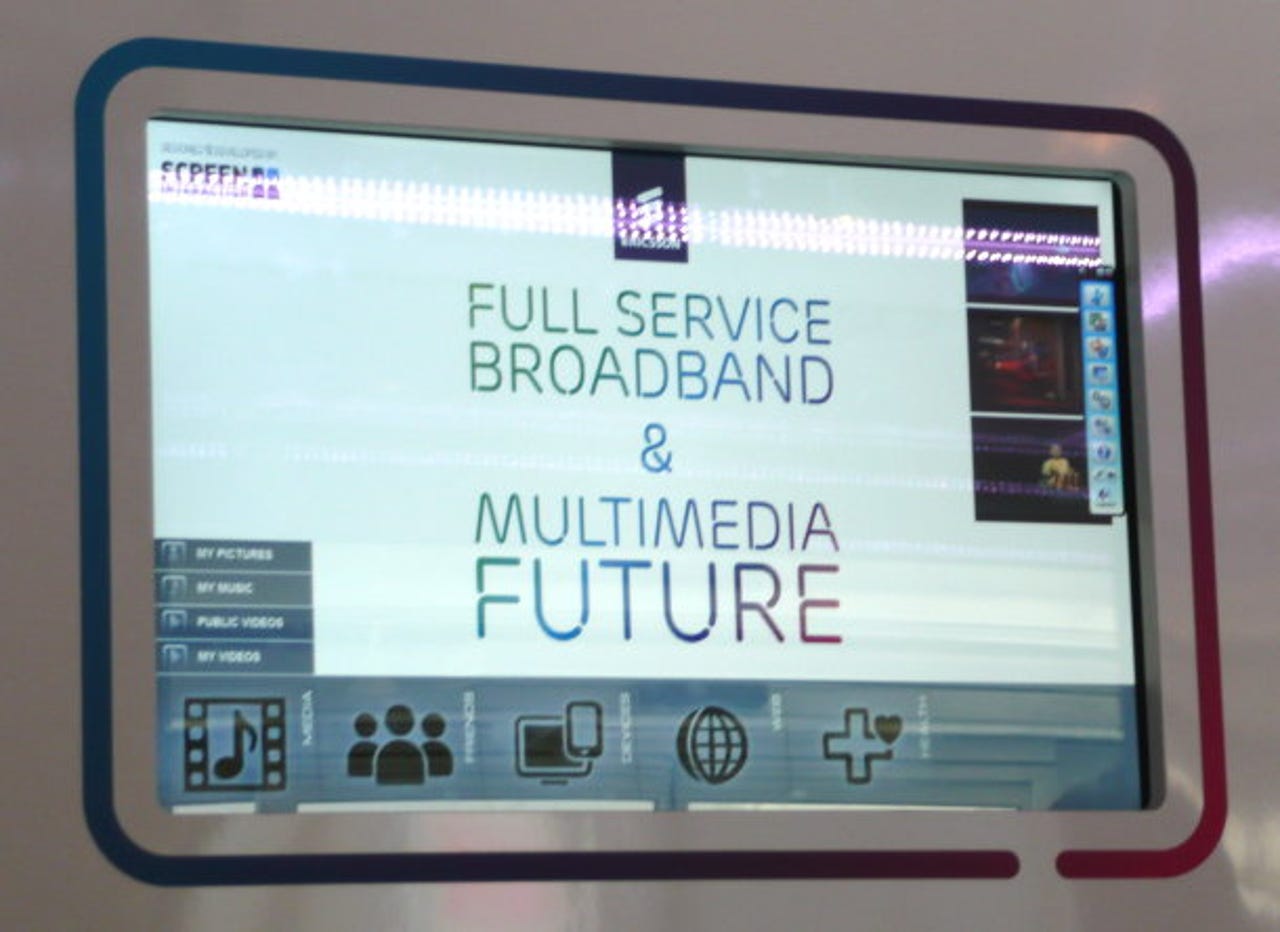Photos: Ericsson previews healthcare 2.0


And shakes a Twittering tree...
Network-kit maker Ericsson has demoed how a future of connected devices could help people monitor their health in their own homes.
Pictured here is a user interface that could run on a TV - with a 'health' tab sitting alongside more standard 'media' and 'movie' menus.
The TV interface enables a person to track and monitor their health and would also enable them to share their stored health data with their doctor if they choose, enabling the doctor to remotely monitor a patient.
Photo credit: Natasha Lomas/silicon.com
Devices such as the weighing scales shown above could be connected to the user's network so that data is sent direct to the health monitoring system when the scales are used.
Another type of connected device that could be integrated into the system is a pill bottle that records when a pill is taken out. This enables users - and potentially doctors - to check whether medicine has been taken or not. Alerts to remind a patient to take a missed pill could also be built into the system.
Photo credit: Natasha Lomas/silicon.com
Here recorded health and activity data is shown in graph form - such as the user's weight, kilometres walked, hours slept and even blood pressure and glucose levels.
As well as helping doctors keep an eye on remote patients, Ericsson said the software system would allow the user to share their data - or specific parts of data - with family members.
Photo credit: Natasha Lomas/silicon.com
With the addition of a webcam, the healthcare system could also facilitate video calls between doctor and patient - enabling remote consultations to take place.
Photo credit: Natasha Lomas/silicon.com
Healthcare questionnaires could also be sent to a patient via the software, with the patient's responses instantly made available to their doctor.
Photo credit: Natasha Lomas/silicon.com
To demonstrate how - in theory, at least - "anything" could become a connected device, so long as it's armed with wireless sensors - Ericsson also demoed this Twittering tree...
Photo credit: Natasha Lomas/silicon.com
Sensors connected to the tree enable it to detect when people are nearby, causing changes in the tree's electromagnetic field. This data is then sent to a processor in a nearby laptop, activating a number of responses (from a database) - and tweeting them via microblogging site Twitter (as seen below).
The tree's lifesteam
Screenshot: Natasha Lomas/silicon.com
To complete the 'speaking tree' theme, Ericsson hooked up a speaker and light - enabling the bush to signal its moods visually and 'speak' its tweets.
Photo credit: Natasha Lomas/silicon.com